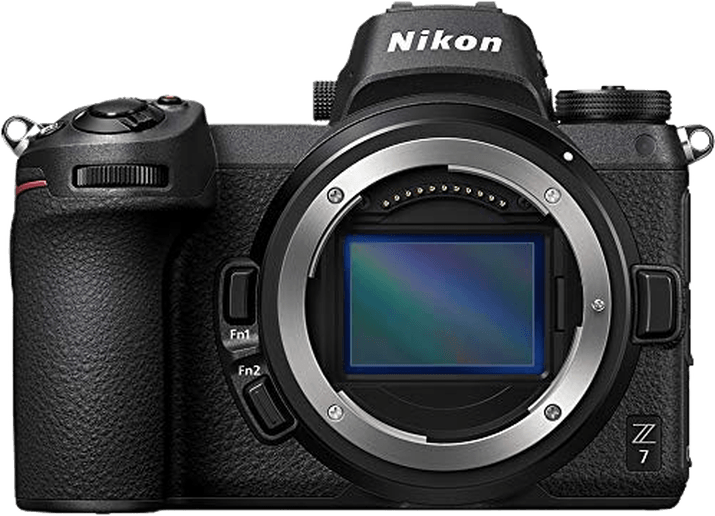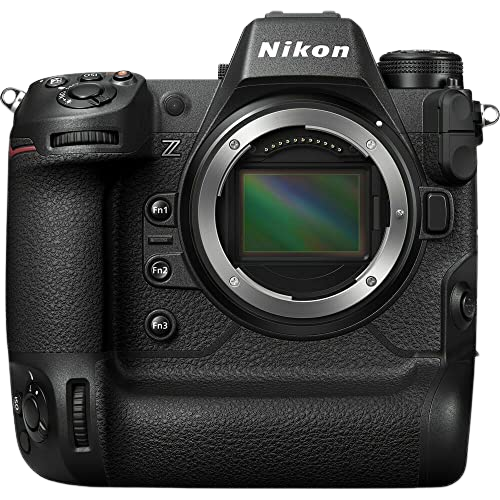Nikon Z7 vs Z9 Comparison
Nikon Z7

Nikon Z9

The Nikon Z9 takes the lead with a score of 87/100, compared to the Nikon Z7‘s 82/100. Both cameras are mirrorless and share some common specifications. However, there are differences that set them apart.
The Nikon Z9, released in 2021, has a launch price of $5500 and measures 149 x 150 x 91mm, weighing 1340g or 2.95lbs. On the other hand, the Nikon Z7, launched in 2018, is priced at $3400, with dimensions of 134 x 101 x 68mm and a weight of 675g or 1.49lbs.
The Z9’s higher score indicates its superior performance and features. Its larger size and heavier weight suggest a more robust build and possibly better ergonomics. However, the Z7 has its advantages, being lighter and more compact, which is beneficial for photographers who prioritize portability.
To sum up, the Nikon Z9 outperforms the Z7, but the Z7’s compactness and lower price make it an attractive option for those seeking a more portable and affordable camera.
Nikon Z7 vs Z9 Overview and Optics
The Nikon Z9 outperforms the Nikon Z7 in optics with a score of 88/100, compared to the Z7’s 86/100. Both cameras share several specifications, including a CMOS sensor, full-frame sensor size, Nikon Z lens mount, and image stabilization. However, there are some differences that contribute to the Z9’s higher score.
The Z9 has a slight edge in megapixels, with 46 compared to the Z7’s 45.7. This increase in resolution allows the Z9 to capture more detail in images. Additionally, the Z9 has a significantly faster shooting speed at 30 frames per second (fps), compared to the Z7’s 9 fps. This makes the Z9 ideal for capturing fast-moving subjects and action photography.
In terms of processing power, the Z9 features the newer Expeed 7 processor, while the Z7 uses the Expeed 6. The upgraded processor in the Z9 enables faster image processing and better performance in low-light conditions. However, the Z7 has a slightly higher DXOMARK score for its sensor at 99, compared to the Z9’s 98. This means the Z7 has a minor advantage in overall sensor performance, such as dynamic range and color depth.
Despite the Z7’s marginally better sensor score, the Z9’s advantages in resolution, shooting speed, and processing power make it the superior camera in terms of optics. The Z7 remains a strong contender, especially for those who prioritize sensor performance. Ultimately, the choice between the two cameras depends on individual preferences and specific photography needs.
Nikon Z7 vs Z9 Video Performance
The Nikon Z9 outperforms the Nikon Z7 in video capabilities, earning a perfect score of 100/100 compared to the Z7’s 83/100. Both cameras share some common video specifications, including built-in time-lapse functionality. However, the Z9 surpasses the Z7 in several key areas, making it the superior choice for video recording.
The most notable advantage of the Nikon Z9 is its 8K maximum video resolution, which is double the Z7’s 4K resolution. This results in the Z9 producing much higher quality and more detailed footage with video dimensions of 7680 x 4320, compared to the Z7’s 3840 x 2160. Additionally, the Z9 boasts a maximum video frame rate of 120fps, which is twice as fast as the Z7’s 60fps. This allows the Z9 to capture smoother and sharper slow-motion footage, expanding its creative potential.
While the Nikon Z7 does not surpass the Z9 in any specific video capabilities, it still delivers solid performance with its 4K resolution and 60fps frame rate. For those who do not require the cutting-edge features of the Z9, the Z7 may be a suitable option for capturing high-quality video.
When comparing the video capabilities of the Nikon Z7 and Z9, the Z9 clearly stands out as the superior choice due to its 8K resolution and 120fps frame rate. The Z7, though a capable camera, falls short in comparison. For videographers seeking the highest quality footage and the most advanced features, the Nikon Z9 is the clear winner.
Nikon Z7 vs Z9 Features and Benefits
The Nikon Z7 and Nikon Z9 both have a feature score of 87 out of 100, indicating that they are highly comparable in terms of their features. There are several specifications that these cameras have in common, such as a 3.2-inch screen size, touchscreen capabilities, flip screen, WIFI, and Bluetooth connectivity. However, there are also differences that set these cameras apart.
The Nikon Z9 has an advantage over the Z7 due to its built-in GPS feature. This allows for geotagging of images, which is especially useful for travel and landscape photographers who want to keep track of their shooting locations. The Z9’s screen resolution is slightly lower at 2,088,960 dots compared to the Z7’s 2,100,000 dots, but this difference is minimal and unlikely to impact user experience significantly.
On the other hand, the Nikon Z7 has a slightly higher screen resolution, as mentioned above, which could provide a marginally clearer and more detailed display. However, given the minimal difference, it is not a significant advantage over the Z9.
Both cameras offer an impressive set of features, with the Z9’s GPS functionality standing out as a unique advantage. Meanwhile, the Z7’s slightly higher screen resolution does not offer a substantial benefit over the Z9. Since the overall feature scores for both cameras are equal, it is essential for potential buyers to consider their specific needs and preferences when choosing between the Nikon Z7 and Nikon Z9.
Nikon Z7 vs Z9 Storage and Battery
The Nikon Z9 outperforms the Nikon Z7 in storage and battery, with a score of 79/100 compared to the Z7’s 35/100. Both cameras share the feature of USB charging. The Z9 has a significant advantage in battery life, offering 740 shots per charge with its EN-EL18d battery, while the Z7 only provides 330 shots using the EN-EL15b battery.
The Z9 also surpasses the Z7 in storage capabilities. With two memory card slots, the Z9 accepts SD/SDHC/SDXC (UHS-II compatible), CFexpress, and XQD cards. Conversely, the Z7 has a single memory card slot and only supports XQD cards.
Although the Z7 falls behind in these aspects, it may still be a suitable choice for photographers with less demanding storage and battery requirements. However, the Z9 clearly excels in providing longer battery life and greater storage flexibility, making it the superior option for those who prioritize these features.
Nikon Z7 vs Z9 – Our Verdict
Are you still undecided about which camera is right for you? Have a look at these popular comparisons that feature the Nikon Z7 or the Nikon Z9:

